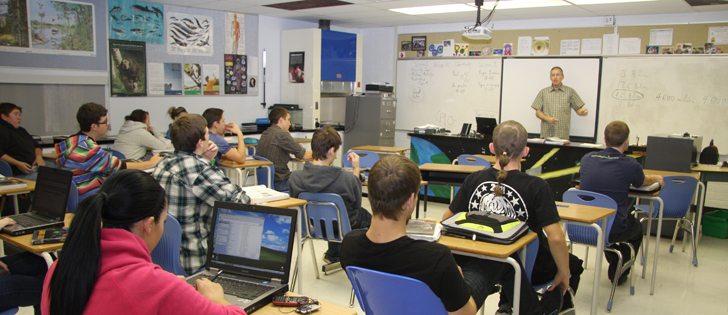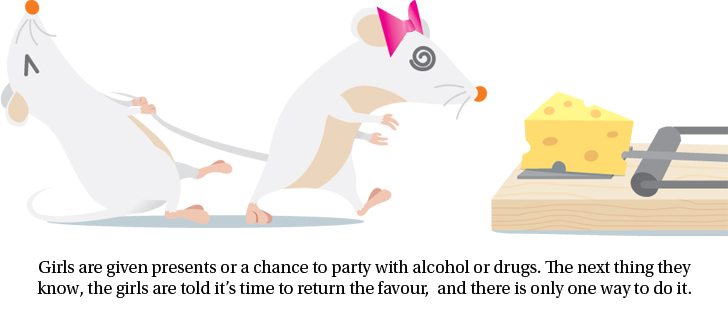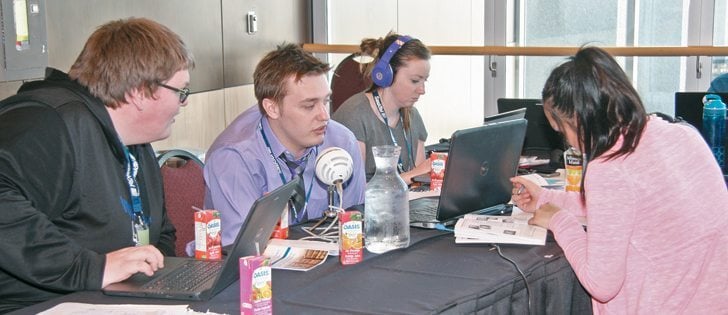Will books become extinct? | Study shows many students rely on the internet for information
SASKATOON — It was on a bus trip with his daughter’s Grade 6, 7 and 8 schoolmates that Jay Wilson got the urge to conduct his latest survey.
The University of Saskatchewan education professor noticed only one was reading a book out of the 50 kids on the two-hour bus ride. The rest spent their time on cellphones.
That led him to do a survey to examine the literacy of teenagers, the impact of technology on their lives and how teachers can best reach today’s students.
Wilson said he wanted to uncover whether English teachers should stop making students read books like To Kill a Mockingbird and whether school administrators should spend $10 million on iPads.
Read Also

Nutritious pork packed with vitamins, essential minerals
Recipes for pork
Speaking at a session during the recent National Congress on Rural Education in Saskatoon, he said today’s devices mean teachers and trustees must decide what to keep, rework and discard in school courses.
With help from the Sun West School Division in Saskatchewan, he sent out surveys this winter to all Grade 10 and 12 students in 16 rural high schools.
He got a 50 percent return rate, or 440 surveys, and is now analyzing answers.
The survey asked what type of a reader the student was, what format their reading was in, what devices they had and how they used them.
His preliminary findings show that students reported reading paper books and magazines outside school but what they read the most is text messages, followed by social networking sites such as Facebook and YouTube.
Of the group, 94 percent have cellphones and iPods and half also have tablets. Everyone reported being on their cellphone for at least one hour a day and in constant contact with their peers.
They also watch a lot of movies but none of them said they read or write blogs on their devices.
Wilson called this an important point since it shows teens are more likely to be consumers of technology rather than creators and sharers.
While 90 percent of the sample reported taking their technology to school, a third reported that they are not allowed to be on their devices at school.
Wilson said the results suggest students rely on the internet first and printed resources second to get information.
Their teachers are where they go for literacy challenges over friends and family, a finding that Wilson said shows an important leadership role for teachers.
One questioner at the March 18 session asked whether students are taking notes on paper or devices. Another teacher noted she had seen students taking a picture on their cellphone of notes on a classroom board.
A third noted that when she was growing up on a farm and they first got telephones, her parents worried that their children would be on the phone all the time. It didn’t happen because they were on a party line. But she said parents today have the same sort of fear about their children and the new technology.
Jade Ballek, a learning consultant from Outlook, Sask., said the information will help guide the use of technology to improve students’ learning.
She said there is no evidence that kids are worse spellers because of their texting.
She said even though tweeting was not reported as a common activity on the survey, it is something she teaches to her e-journalism class.
“It’s all learning and exploring. It’s pushing students out of their comfort zone.”
Ballek also wondered how Facebook could be used in school.
If there are problems with students not using devices appropriately, it is dealt with the same as any other behavioral problem, she said.
Ballek said a cellphone is a tool and students have to learn how to use it correctly.

















